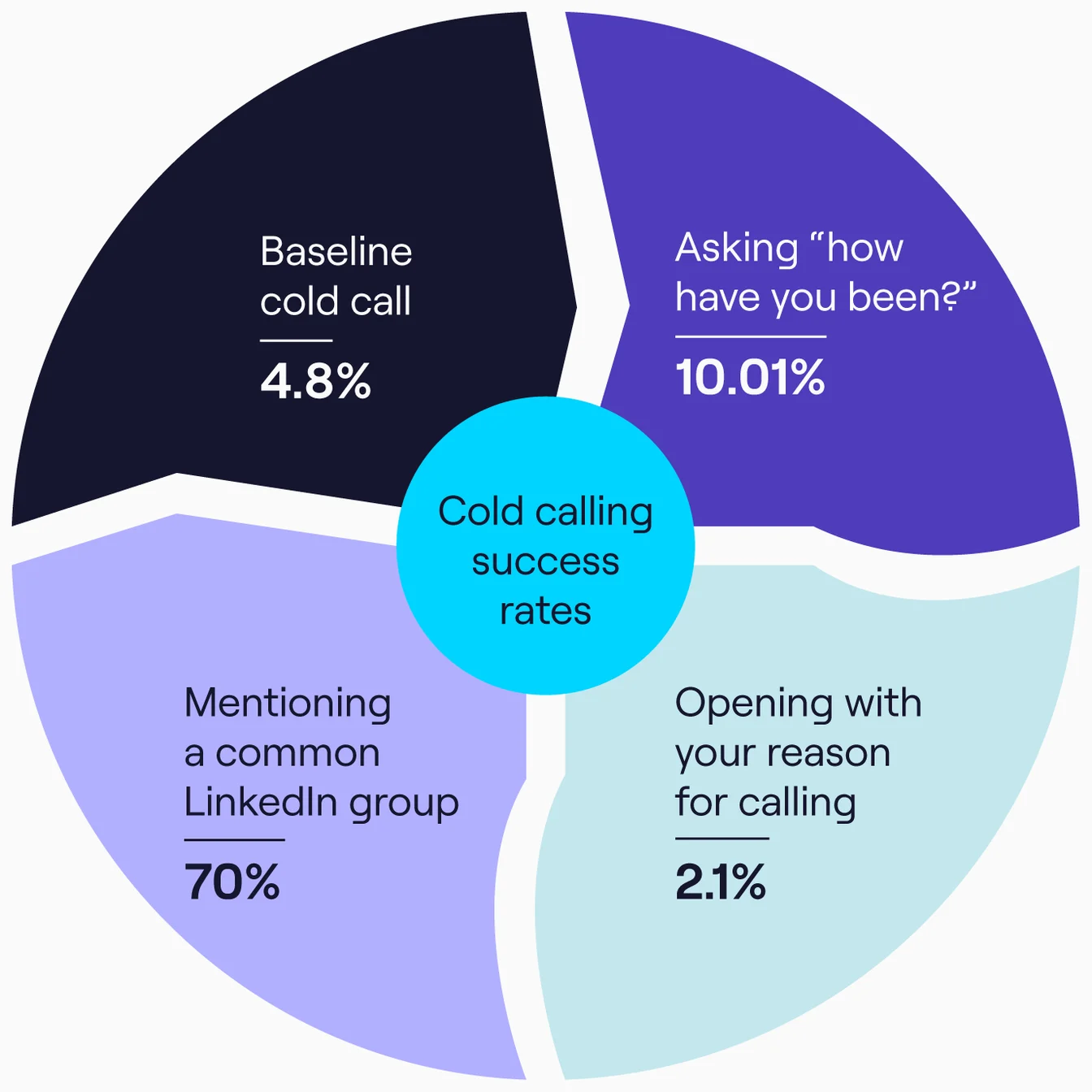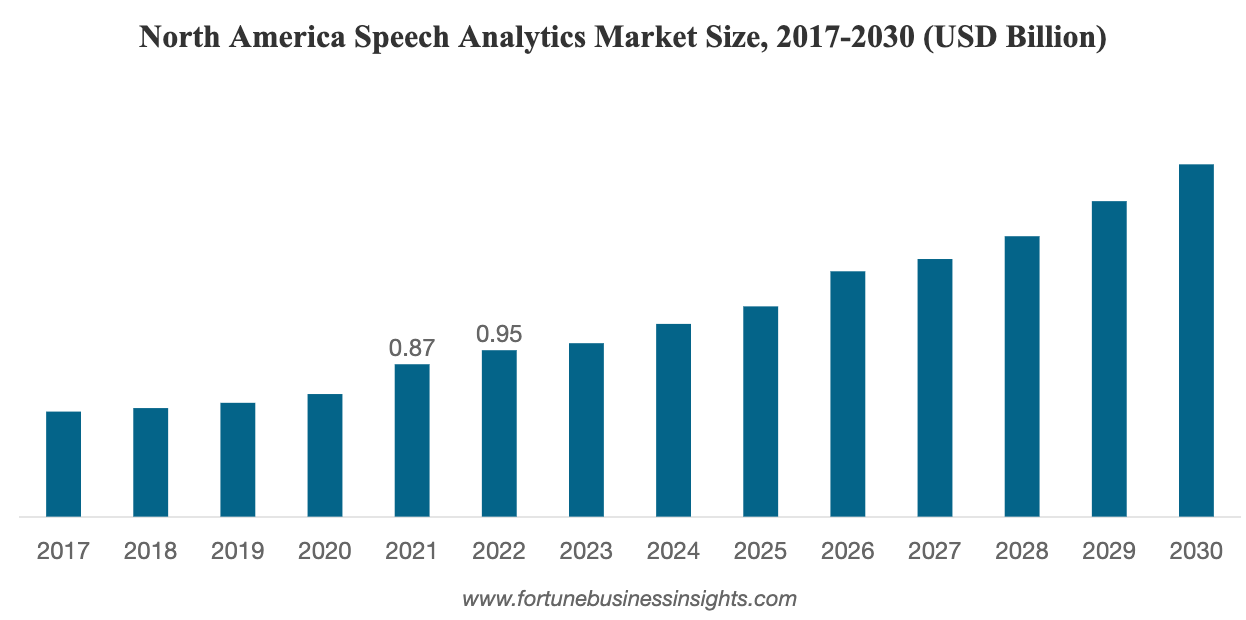Ever heard the saying, “It’s not what you say, but how you say it?” That’s basically the golden rule in sales, especially when you’re on the phone with a customer. The tone of your voice, the words you choose, and even how quickly you respond can completely change the outcome of a call. But figuring out exactly what works and what doesn’t (beyond just a gut feeling) isn’t always easy.

Image sourced from cognism.com
Now, conversions over the phone are tough. The average cold calling success rate is only 4.8%, according to Cognism. Not great, right? But speech analytics can help change that. By analyzing your conversations in real time, it helps you pinpoint where things are going wrong (or right!). For example, simply asking, “How have you been?” can boost your conversion rate up to 10.01%.
So how can you use this tech to turn things around? In this blog, we’re going to break down the benefits of speech analytics and show you five ways to boost your conversion rates. Let’s get started.
What is Speech Analytics?
Speech analytics is the process of looking into recorded calls to better understand your customers and improve future interactions. Think of it as a high-tech way to listen in (in a totally ethical way) on conversations.
Let’s see this in action. Imagine you run a home improvement store. With a data processing pipeline, you can dig into customer calls and spot trends or common issues. For example, you might find that lots of customers are asking about the same power tool or getting frustrated trying to find specific items. With this, you can stock up on what people really want and even improve your in-store signs to help them navigate better.
Contact center speech analytics explained
Contact center speech analytics is all about using speech analytics tech in call centers. It fits right into contact center solutions and looks at all the calls agents handle every day, pulling out some really useful info from the recordings.
This tech is a total game-changer for businesses that want to level up their contact center performance and keep customers happy. By checking out those recorded calls, companies can figure out what issues keep popping up and train their agents better, leading to improved customer satisfaction and, in turn, a higher conversion rate.
With call center analytics, contact centers can turn every chat into a valuable piece of info that helps them keep getting better.
How Does Speech Analytics Work?

Image sourced from fortunebusinessinsights.com
The global speech analytics market was valued at USD 3.31 billion in 2022 and is projected to grow to an incredible USD 10.37 billion by 2030. But how does it work?
Well, speech analytics software uses a bunch of sales intelligence tools and technologies to break down spoken language, such as:
Step 1 – Capturing audio: Conversations between customers and agents get recorded. These recordings are saved for later analysis.
Step 2 – Automatic Speech Recognition (ASR): Next, ASR tech steps in to turn those spoken words into text (AKA a transcription). This part is super crucial because it takes the audio and converts it into something we can actually work with.
Step 3 – Natural Language Processing (NLP): Once we’ve got the text, natural language processing algorithms get to work. They analyze what’s been said to understand the context, customer sentiments, and meaning behind the words. This essentially just means they pick out keywords, phrases, and patterns.
Step 4 – Machine learning: After processing the text, machine learning models like artificial intelligence and other speech analytics solutions extract insights. These models can spot trends, find oddities, and even predict outcomes based on past data.
Step 5 – Share insights: Finally, the insights are compiled into reports and dashboards that are easy to read. These gems can then be shared with managers, executives, or anyone else who needs to make smart decisions.
Benefits of Using Speech Analytics in Call Centers
Call centers have evolved a lot. They’re not just answering phones anymore. No, they’re now digital hubs where customers can reach out through calls, texts, chats, emails, and even social media and other digital channels. In fact, 40% of consumers say having multiple options for communicating is the most important part of a company’s customer service.
When call centers start using speech analytics for these multiple options they get valuable, actionable insights into what customers really want and how they feel. The benefits of speech analytics are huge:
- Better customer experience: Speech analytics checks up on conversations to catch those little things that drive customers crazy (you know, like that one-click-buy that never works). When businesses spot these pain points, they can smooth out the whole customer journey.
- Quick decision making: Real-time, valuable insights mean agents can pivot mid-call if needed. By switching up their responses on the spot, they’ll increase the odds of closing the deal.
- Next-level agent training: AI-powered speech analytics shows where agents could use a bit of extra coaching—maybe it’s wording, timing, or just handling a tricky objection. This way, businesses can customize training to match each agent’s style and strengths.
- Keeping it compliant: Speech analytics makes it easy to keep conversations within the lines. It automatically checks that all customer interactions meet both the company’s rules and industry standards, without you needing to listen to every. single. call.
3 Ways to Boost Conversion Rates with Speech Analytics
Sentiment analysis
Imagine a customer calls in, and they sound… less than thrilled. Maybe there’s a sigh, a hint of irritation, or they’re giving quick, clipped responses. You can bet there’s something off, and often it’s something small but frustrating, like trying to view products or make a purchase, but constantly getting interrupted by video ads or pop-ups. It’s easy for customers to get fed up if they’re eager to buy but feel like they’re jumping through hoops.
With sentiment analysis, your team can pick up on these mood cues right from the start. Speech analytics reads the tone, pace, and choice of words to flag when someone’s on edge. Then, agents can adjust their approach, maybe empathizing with the hassle, apologizing for any inconvenience, or even guiding them around the frustration of ads. They might suggest alternative steps or send a direct link to complete the purchase, which shows your team really listens and cares.

Image sourced from salesforce.com
Now this is a win for conversions because when agents respond to subtle mood changes, they create a more positive and engaging experience, which increases the chance of a successful outcome. Happy customers are more likely to convert, whether it’s buying a product, subscribing to a service, or adding extras to their order. In fact, Salesforce found that 71% of customers said they’d made a decision based on customer service. With sentiment analysis guiding the conversation, agents are better equipped to handle objections smoothly, build a connection, and close more sales.
Churn prediction
One of the biggest enemies of conversions is, you guessed it, customer churn. Losing customers means missing out on future sales, and if churn becomes a trend, it can seriously impact your bottom line. But with churn prediction, speech analytics can help you spot when a customer might be thinking of leaving before they actually do.
Imagine a customer who’s been calling a lot, sounding a bit annoyed, or even dropping hints about switching to another service. These signals are subtle to the naked ear because we all have different communication styles, but speech analytics picks them up. If a customer mentions “complicated features,” or struggles with “constant pop-ups,” these are all clues that they’re not completely satisfied.
Once your speech analysis has picked this up, your team can jump in and save the day, maybe with a discount, a product tweak, or a solution to a lingering issue. This proactive approach not only reduces churn but also boosts conversions by turning potentially lost customers into loyal buyers.
Issue resolution

“Why is my account locked again?” “I can never reach a real person!” “This app is just too confusing.” “I keep getting charged extra, what’s going on?”
No matter how brilliant the products or services you offer, there are always going to be little blips and slip-ups that lead to complaints like these. But with speech analytics, you can fix recurring issues before they snowball into lost customers. You’ll be able to analyze common phrases and words during calls (using speech-to-text software) and, if there’s a pattern of people mentioning, say, account log-in issues, long wait times, or confusing billing, speech analytics will flag it.
Just think about how useful this is for customer support. If contact center agents know which issues are popping up the most, they can prepare, personalize, and speed up solutions on the spot.
In the end, faster, more effective issue resolution means customers stay happier, your agents spend less time on repeat problems, and those satisfied customers are way more likely to convert.
Final Thoughts
So that’s it. Our complete guide on speech analytics, packed with everything you need to know about this awesome technology.
Every call, every sigh, every “uh-huh” your agents hear can actually tell you so much about what’s driving your customers or what’s driving them away. And that’s exactly the insight you need to boost those conversion rates.
You’ll also benefit from fewer churn risks, smoother issue resolution, and a team of agents who are operating with real-time data that helps them close the sale. By listening a little closer and acting a little faster, you’re creating fans, repeat buyers, and loyal customers who stick around because they feel heard.
The bottom line is, speech analytics turns each customer call into a goldmine of customer insights and maybe a little extra $$ in your pocket. Now go get listening!

